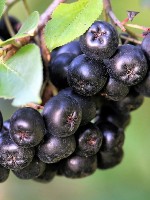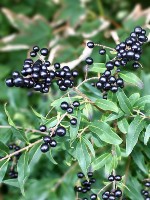Mon-Fri 9am - 5pm Mountain time
Viking Aronia Berry vs Wild Privet
Aronia melanocarpa Viking
Ligustrum vulgare
NOT AVAILABLE THIS SEASON - MIGHT RETURN
NOT AVAILABLE THIS SEASON - MIGHT RETURN
Viking Aronia Berry is easy to grow, with black berries that are high in antioxidants. The Viking variety is much more productive than the non cultivar Aronia Berry. The berries can be eaten fresh but are found to be tart and bitter. They are more often used in baking, jams, juices, and wine. They have small, white flowers with a hint of pink that grow evenly on the shrub. The summer foliage turns a very attractive red in the fall.
The Viking Aronia Berry is a self-pollinating plant. Because of its uniformity and high yield, the Viking Aronia Berry is a popular cultivar.
Wild Privet is a fast growing ornamental shrub that is well suited for forming hedges and privacy screens. It will retain its leaves in warmer climates but drops them in colder areas. They have small white flowers, though the smell is often considered unpleasant. While the berries are inedible, they are a good food source for many bird species.
It is recommended to prune Wild Privet immediately after flowering, as it can readily self seed. It is deer and rabbit tolerant. It can grow in dry areas, on slopes, and withstand the wind making it well suited for many growing conditions.
Viking Aronia Berry Quick Facts
Wild Privet Quick Facts
Toxicity: If ingested, all parts of this plant will cause severe discomfort. Toxic to dogs, cats, and horses

